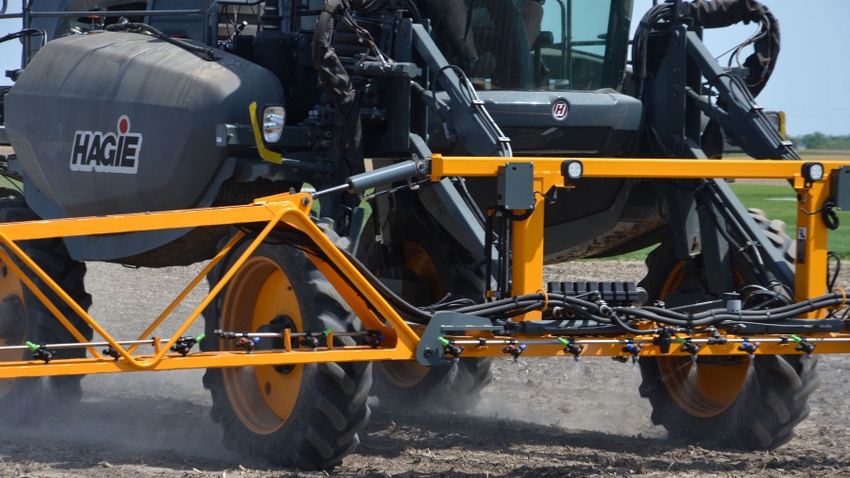
You apply herbicides with liquid 28% nitrogen, knowing some N might be lost. So, do you count nitrogen in the burndown toward total nitrogen applied? Will your corn benefit from it?
Are these silly questions? Jim Camberato says there are no silly questions, especially with nitrogen at $1 per pound and corn at $5 to $6 per bushel. Camberato, the Purdue Extension soil fertility specialist, provides answers.
If I put burndown herbicides on top before planting with 20 gallons of 28%, how much credit should I take for N? Twenty gallons of 28% applies 60 pounds of N. Figure 3 pounds of actual N per gallon. If it was 32%, figure 3.5 pounds per gallon. So, 20 gallons of 32% N would contain 70 pounds actual N.
Back to your question about applying 20 gallons of 28% N with burndown: The amount of N that remains for the crop, of course, depends on both temperature and rainfall, as well as soil properties, and tillage and timing. Urea in 28% can form ammonia gas within the first few days after application. Losses of ammonia to the air can be as much as 15% if temperatures are warm and no rainfall occurs within a couple of days of application to wash urea off plant residues and into the soil. When left on the surface of tilled silt loam or heavier soils, ammonia loss will be considerably less.
The other N losses incurred with application of 28% with the burndown herbicide involve the nitrate form of N. They can occur anytime between application and uptake by the crop. Although 28% is only one-quarter nitrate when applied, both urea and ammonium become nitrate in warm, moist soil rather quickly. Nitrate can leach beyond the root zone or be lost to the air in saturated soils. Warm temperatures that hasten conversion to nitrate and excessive rainfall promote greater N loss. In very poorly drained and excessively well drained soils, N loss could exceed 50%. The earlier the application of N, the more likely the nitrate will encounter excessive rainfall and N losses will be greater.
The bottom line is that you start out with 60 pounds applied toward your total season supply of N. How much the corn crop sees depends on how these factors play out.
If I put on 20 gallons in burndown right before planting, is it equivalent to someone putting down 20 gallons of N as starter with the planter? Some years ago, limited research found that 50 to 60 pounds of N applied preplant could give a similar crop response to lesser amounts of N applied in a band 2 inches below and to the side of the seed. I suspect that the 2-by-2 placement of 20 to 30 pounds of N is more consistently effective at accelerating corn growth than broadcast preplant N.
However, in the absence of significant N loss, the higher rate of N broadcast likely gives more flexibility to the timing of sidedress N application. So, in a dry spring, where N loss is minimal, 50 to 60 pounds of N benefits early corn growth and gives flexibility on sidedress timing.
About the Author(s)
You May Also Like




